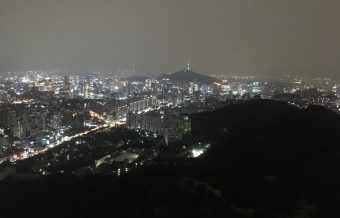Spectral Genealogies: Korean Transnational Adoptees, Substitutability, and the Korean Diaspora

An estimated 200,000 South Korean children have been adopted to Western countries since the Korean War armistice agreement. While special provisions were made in 1953 for military personnel to adopt ‘war orphans,’ it was the highly publicised adoption of eight children by evangelical couple Harry and Bertha Holt in 1955 that is typically seen as a founding moment in the history of the modern transnational adoption system. Alongside Cold War era patriotism and humanitarian discourses that emphasised the neediness of Korean so-called ‘waifs of war’ and the moral duty of Christian U.S. couples to ‘rescue’ and take them in, assimilationist ‘colourblind’ ideology framed how these children ought to be treated. Korean children were deemed to possess “a racial flexibility and benign exoticism” (Laybourn 2018: 32) and were assumed to adjust and assimilate easily into their predominantly white adoptive families and communities. This worked alongside the longstanding ‘clean break’ ideal of adoption, whereby adoptees were to be raised ‘as if’ born to their adoptive parents.
In this paper, I discuss the ‘spectral genealogies’ generated by Korean transnational adoption practices, which become central to the constitution of adoptee subjectivities. These genealogies are spectral and multiple because of the production of orphanhood, which fulfils a crucial affective and legal function within the Korean adoption system. In order to facilitate the potential adoption of a child, agencies often had to ‘create’ orphanhood administratively. As Jodi Kim points out, the production of orphanhood constitutes a putatively ‘temporary’ form of ‘social death’ insofar as this social death is ‘negated’ when the child is adopted and their ‘social identity and personhood’ restored (2009: 857). Hence the adoptee is produced via a double negation: first, of their pre-adoption past and genealogical history, and second, of their liminality as orphan. Yet this ‘restoration’ of personhood is of a specific kind – not recuperation or reactivation of one’s origin, but the production of a ground that remains haunted by institutional erasures, uncertainty, and absence. Transnational adoption practices create spectral genealogies, multiple origins – institutional, familial, national – and afterlives that ‘haunt’ but which may also provide a basis for connection.
These genealogies and ghostly traces are often expressed in what I call ‘substitutability.’ I claim that substitutability indexes the ways in which the adoptee’s pre-adoption past – even as absence or as unknown – is brought to bear on their sense of self. I identify two interrelated axes or senses of substitutability: vertical and lateral. Vertical substitutability accounts for the temporal, irruptive dimension of the adoptee’s prehistory, which is characterised by the sense that ‘I came to take another’s place.’ Jane Jeong Trenka, for example, writes that her and her sister, also adopted from Korea, “would be haunted…by the ghosts of our own dead twins, whom we had simply replaced one day by changing clothes” (2003: 130). One did not become another child, but rather one child came to take the other’s place – in order to be placed elsewhere. The adoptee’s pre-adoptive past is preserved as other, as absence that haunts. In this sense, the adoptee’s pre-history must be narrated by the child who wasn’t there. The adoptee’s origin is multiplied, unstable, carrying spectral traces of their prehistory which confuse and confound attempts to construct a so-called ‘coherent’ personal narrative.
Yet the contingency of adoptees’ placements and identities can also prompt speculations regarding what could have been. In this sense contingency begets possibility. As Honig argues, “many transnational adoptees live with phantom lives, lives defined as possible but unlived” (2005: 215). I argue that the ‘could have been’ can form the basis for a sense of lateral substitutability among adoptees: the sense that ‘I could have been you.’
Finally, I argue that this focus on adoptees’ spectral genealogies provides a way of conceiving what we might call a ‘kinship of spectralities’ among the Korean diaspora. Here I engage predominantly with the work of Grace Cho (2008) and Jodi Kim (2015). This is important because it not only situates Korean transnational adoption within an ongoing legacy of militarism and ‘forgotten’ war, but also attends to the disruptive potential of such spectralities to complicate notions of assimilation. Bringing this account into conversation with work on the haunting and ghosts of the Korean diaspora – from which adoptees are typically excluded – would allow us to conceptualise a ‘kinship of spectralities’ that attends to the persistence and force of the past, a past of which one can never be certain, the past which, even as absence, refuses to be forgotten.


1 thought on “Spectral Genealogies”